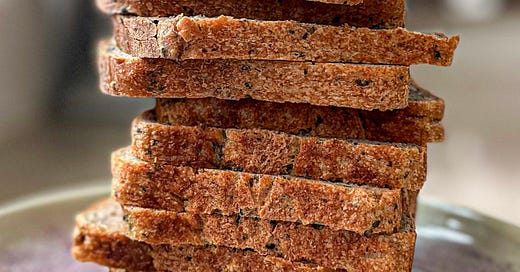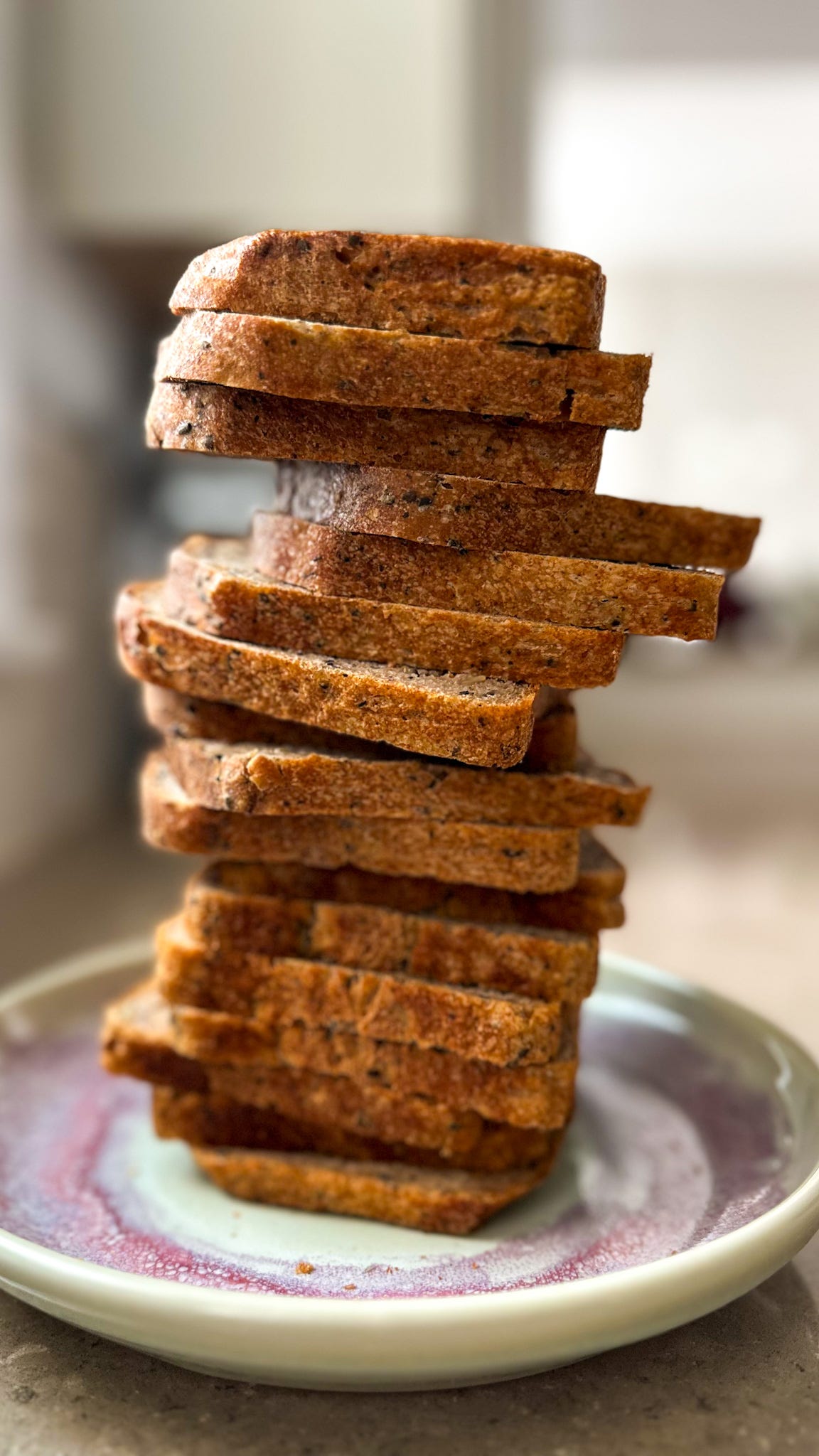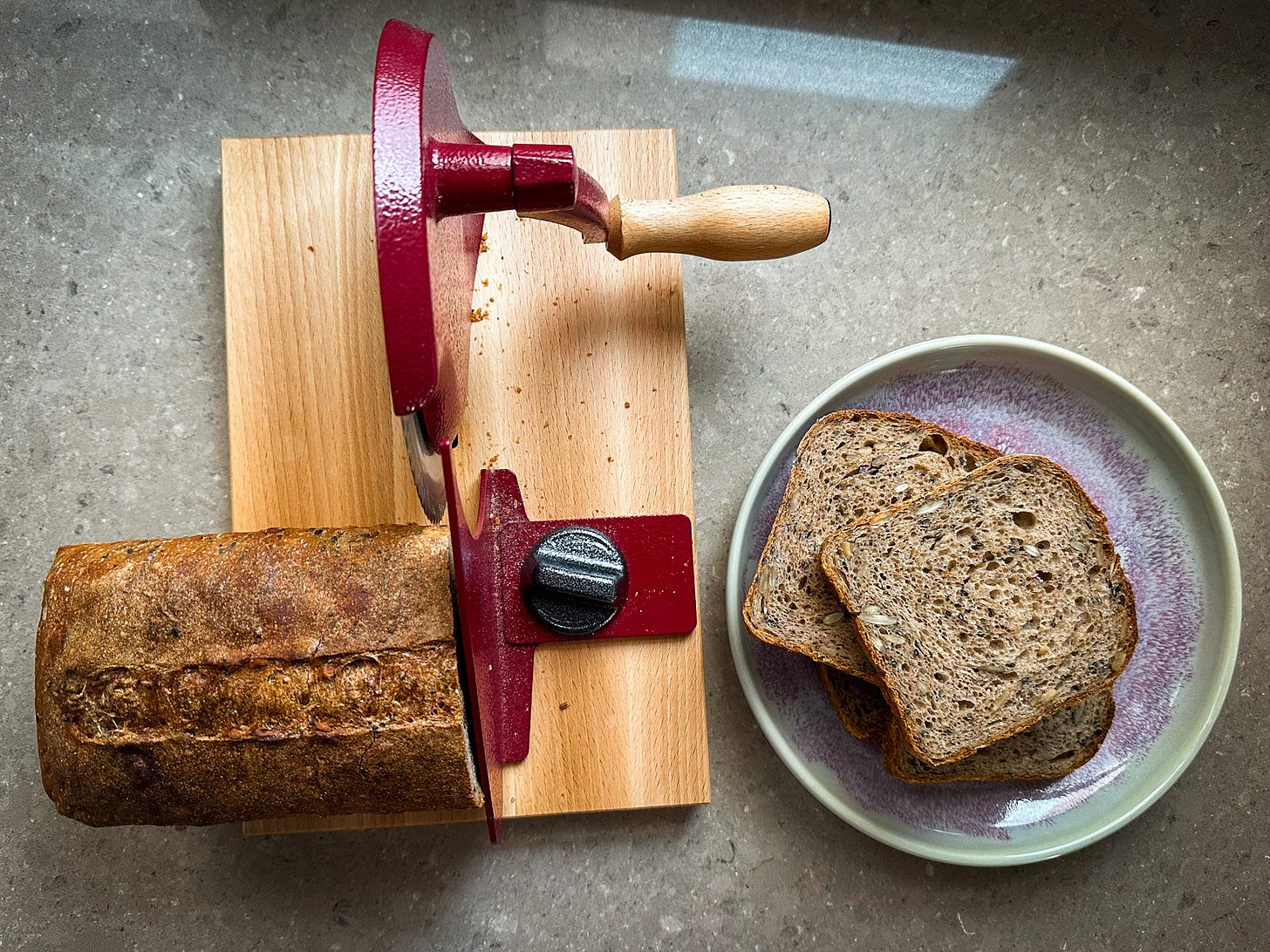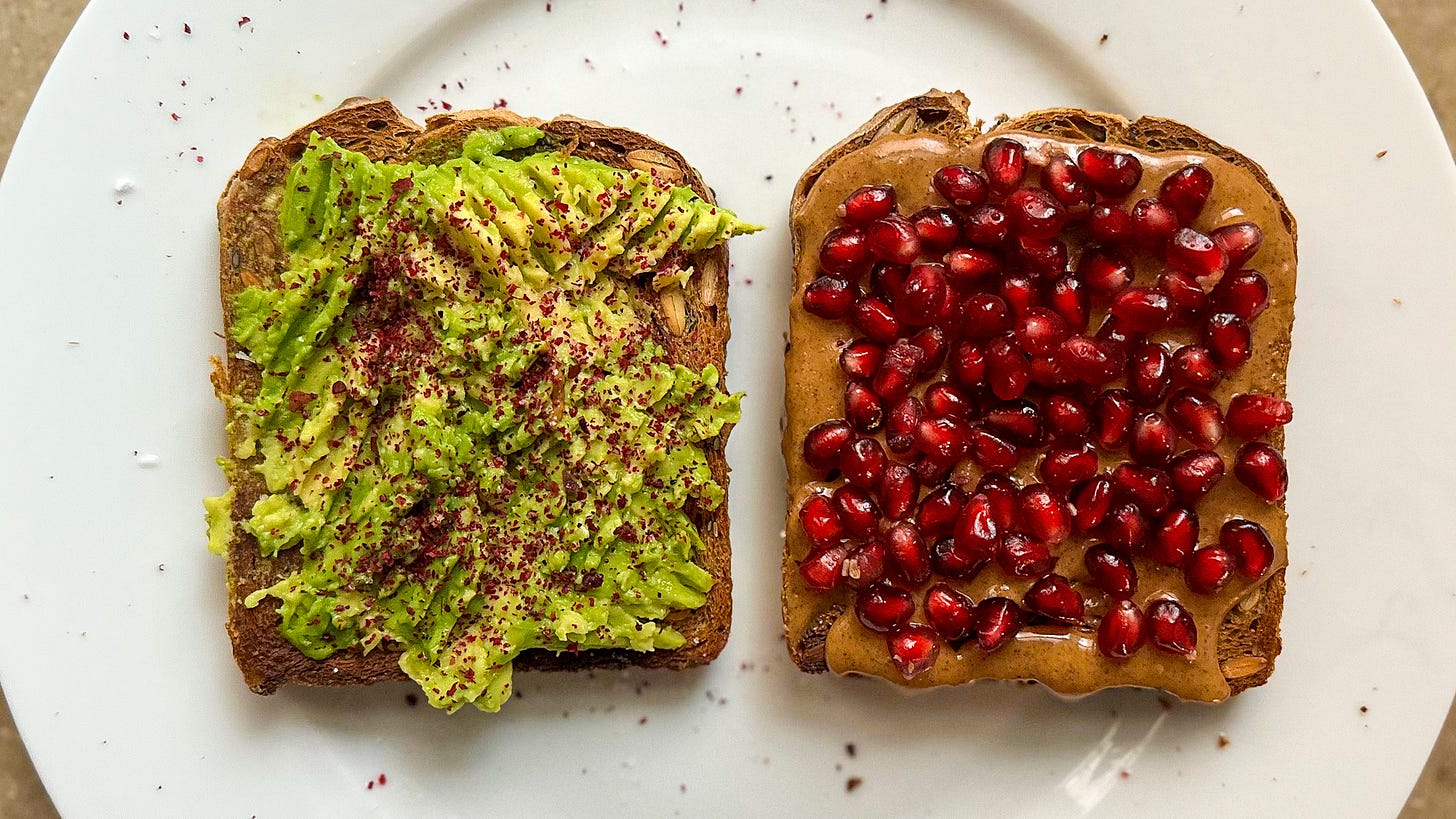Lovely Lazy Loaf
When improvisation leads to an easy, flavor-packed, whole-grain, seed-studded, loaf for the ages.
After surviving the holiday baking season and being joyfully neck-deep in testing recipes for my book, I realized I needed to play. Most people think that baking, unlike cooking, doesn’t allow room for for improvising. But once you know the rules and know what things should look and feel like, you learn how to play around. Baking without a recipe can lead to a masterpiece or a disaster, but I always take the plunge.
The other night, before feeding Pauline (my half-rye, half-whole wheat sourdough starter), I realized wanted a loaf of bread. I wasn't in the mood to make a full-on sourdough. I had other, more complicated recipes to test, therefore I wanted somtething simple. So I improvised on a loaf of overnight no-knead (or low-knead) bread, something grainy, seedy, and perfect for sandwiches or toast. I measured some flour, yeast, water, and salt but didn't follow a recipe. I know the basic quantities to fill my loaf pan, the proper amount of salt (2% of the weight of the flour), and that 1/4 teaspoon of yeast is plenty for an overnight rise at room temperature. I know about how much water the dough needs, and I add more until it feels right.
And you know what? The loaf came out ten times better than I thought it would. I made it four more times, taking notes and making small tweaks and that’s what we have today. People say that baking is an exact science. But just like cooking, at some point you learn to improvise. And improvising in the kitchen keeps baking fun.
I must shout out this bread slicer. Jason got it for me as a birthday gift, and it’s perfect. You get clean slices with very little effort. It’s not cheap, but if you slice as much bread as I do, you will thank yourself. Also: it will delight your guests.
A crusty loaf of naturally leavened bread will always be my favorite. Whether it's a brick of 100% rye or a light, fluffy white wheat loaf, that complex moreish flavor can’t be beat. But I'm not a purist. Sometimes I want a loaf that will rise on a dependable schedule. I've made hundreds of sourdough loaves, but I'm not a sourdough expert. But if you have a starter, are new-ish to sourdough, or just want something with the same depth of flavor but a bit more foolproof, try this recipe.
This loaf is half whole-grain flour, but it still bakes up fluffy. A few handfuls of toasted seeds add another dimension of flavor and texture. I bake it in my favorite loaf pan, so we don't have to fret about shaping this rather wet dough.
Lovely Lazy Loaf
I love making sourdough, but sometimes I don't have the patience or my starter and I don’t have the energy. Adding a dash of instant yeast, some starter, and a hefty dose of whole-grain flour gives you a loaf with a ton of flavor, a bit of sourness, and a reliable rise. The bit of rye flour throttles the flavor into high gear. A dash of olive oil makes the loaf significantly easier to slice.
This recipe looks long because I try to be detailed, but it’s very hands-off and chill.
250 g bread flour
200 g whole wheat flour
50 g dark rye flour
10 g (2 teaspoons) fine sea salt
1/4 teaspoon instant yeast
80 g mixed toasted seeds (I like 30 g pepitas, 30 g sunflower, 20 g black sesame.)
400 g water
30 g ripe sourdough starter
10 g olive oil
Add the flour, salt, yeast, and seeds to a large mixing bowl and whisk to combine. Add the water, sourdough starter, and olive oil, then use a wooden spoon or dough whisk and stir until you have a wet, shaggy dough with no dry patches. Cover the bowl and let the dough rest for 30 minutes.
How to stretch and fold wet bread dough:
First, imagine your dough as having four sides, like a square. Using wet (not floured) hands to prevent sticking, grab one side of the dough and gently stretch it upward and outward, being careful not to tear it. Then, fold this stretched portion over to the center of the dough mass.
Rotate your bowl 90 degrees and repeat this process with the next "side." Continue until you've done all four sides. As you do this, be gentle but confident with the dough. The wet dough will be sticky—that's normal. Each stretch should extend the dough as far as it will go without tearing. You should feel the dough build tension as you work with it
Do one set of stretches and folds, then rest for 20-30 minutes. Do a second set of stretches and folds, then rest for another 20-30 minutes. Do a final set of stretches and folds, then cover the dough and let it ferment for 12-15 hours at room temperature. The dough should be big, bubbly, and jiggly.
Grease an 8-inch by 4-inch loaf pan, ideally this loaf pan (without the lid). (It’s the absolute best loaf pan in the world.) Dump the dough out onto a lightly floured surface, Pat it into a rough 8-inch square, then roll it up like a sausage. Pop it into the loaf pan and press it down into the pan with your knuckles. Cover the dough and let it proof the bread until it rises about 1 3/4 times its size (not quite doubled), or about 1/2 inch from the top of the pan, anywhere from about 1-2 hours depending on the temperature of your house. If you poke the dough, the indentation should slowly spring back.
When the dough gets close to the end of the rise, preheat the oven to 450F and put a rack on the highest part of the oven and another rack on the lower third. Add an empty old loaf pan or cake pan to the lower rack while the heats up.
When it’s time to bake, place a half-sheet pan on the top rack. This sheet pan blocks the direct heat to top of hte loaf, allowing it to expand more before it dries out. You can, but don't have to, score the top of the loaf with a sharp knife, using a quick motion across to slice a long line down the center of the dough. Spritz the top of the dough with some water and put it in the oven. Add about 1 cup of water to the empty pan to add some steam to the oven. Shut the door, lower the heat to 400F, and bake for 20 minutes. Take the sheet pan out of the oven and bake for another 20-25 minutes, until chestnut brown and the loaf reads about 206-208F on an instant-read thermometer.
Take the loaf out of the pan and set it on a wire rack. If you want a shinier top crust, spritz the top of the loaf with water immediately after removing it from the oven. Let it cool for at least an hour. (I'm guilty of slicing this one open while warm to spread with salted butter and devour.)
The crust will start crunchy but soften as it cools, making for the ideal slice-able loaf. Because of the high hydration and a bit of sourdough, this loaf lasts 4-5 days and stays fresh longer than a version without the sourdough.
Happy Baking,
Martin











Hey Martin - how would you go about refrigerating after the first 12-15 hour bulk proof? Roll into log and shape in pan, then put into fridge and take out an hour before baking or try to proof 1 hour after shape in pan, then direct from fridge to oven, time permitting?
This sounds so good Martin—can’t wait to try it. I agree about baking. It why making pie is one of my favourite things to do. So forgiving!